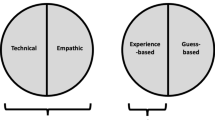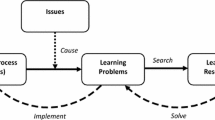Abstract
The authors describe a preliminary study to understand the attitude of engineering students regarding the use of design methods in projects to identify the factors either affecting or influencing the use of these methods by novice engineers. A senior undergraduate capstone design course at Clemson University, consisting of approximately fifty students and nine graduate design coaches, was chosen as the unit of analysis. Results from a survey of the class suggest that, though these novice engineers were convinced that design methods they were eager to learn were of use in helping them make better products, they tended not to use them. The stated reasons for not using them were the effort required to implement the methods, to understand how and when to use the methods, and the pressure to deliver results in a short duration. Recommendations from this study can be useful in designing effective design education programs and to develop more designer-friendly design methods.





Similar content being viewed by others
References
Ahmed, S., Wallace, K. M., & Blessing, L. (2003). Understanding the differences between how novice and experienced designers approach design tasks. Research in Engineering Design, 14(1), 1–11. doi:10.1007/s00163-002-0023-z.
Atman, C., Adams, R. S., Cardella, M. E., Turns, J., Mosborg, S., & Saleem, J. (2007). Engineering design processes: A comparison of students and expert practitioners. Journal of Engineering Education, 96(4), 359–379.
Atman, C., Yasuhara, K., Adams, R. S., Barker, T. J., Turns, J., & Rhone, E. (2008). Breadth in problem solving: A comparison of freshman and senior engineering students. International Journal of Engineering Education, 24(2), 234–245.
Blessing, L. (2003). WHAT IS THIS THING CALLED DESIGN RESEARCH? In A. Folkeson, K. Gralen, M. Norell, & U. Sellgren (Eds.), International conference for engineering design (Vol. 14, pp. 9–10 (exec.summ.), full paper no. DS31_Keynotes). Stockholm, Sweden: The Design Society. Retrieved from http://papers.designsociety.org/what_is_this_thing_called_design_research.paper.24223.htm.
Dutson, A., Todd, R., Magleby, S. P., & Sorensen, C. (1997). A review of literature on teaching design through project-oriented capstone courses. Journal of Engineering Education, 76(1), 17–28.
Dym, C. L. (1994). Teaching design to freshmen: Style and content. Journal of Engineering Education, 83(4), 303–310.
Dym, C. L., Agogino, A., Eris, O., Frey, D., & Leifer, L. (2006). Engineering design thinking, teaching, and learning. IEEE Engineering Management Review, 34(1), 65.
Dym, C. L., & Little, P. (1999). Engineering design: A project-based introduction. New York, NY: Wiley.
Eder, W. E. (1998). Design modelling-a design science approach (and Why does industry not use it?). Journal of Engineering Design, 9(4), 355–371. doi:10.1080/095448298261499.
Ericsson, K. A., Prietula, M. J., & Cokely, E. T. (2007). The making of an expert. Harvard Business Review, 85(7), 114–121.
Finger, S., & Dixon, J. R. (1989). A review of research in mechanical engineering design. Part II: Representations, analysis, and design for the life cycle. Research in Engineering Design, 1(2), 121–137. doi:10.1007/BF01580205.
Frost, R. B. (1999). Why does industry ignore design science? Journal of Engineering Design, 10(4), 301–304. doi:10.1080/095448299261218.
Fulcher, A. J. (1998). A taxonomy of design research topics by multivariate agglomerative clustering. Journal of Engineering Design, 9(4), 343–354. doi:10.1080/095448298261480.
Haik, Y., & Shahin, T. (2010). Engineering design process (p. 287). Cengage Learning. Retrieved from http://books.google.com/books?hl=en&lr=&id=4EQAK2eLxLgC&pgis=1.
Jones, J. C. (1992). Design methods (p. 472). New York: Wiley. Retrieved from http://books.google.com/books?hl=en&lr=&id=IR7KZXa1Nl8C&pgis=1.
Ohland, M., & Summers, J. D. (2005). Teaching design using multiple hierarchical engineering education models. Claremont, CA: Harvey Mudd Design V.
Ornstein, M. (1998). Survey research. Current Sociology, 46(4), 1–136.
Otto, K., & Wood, K. (2001). Product design techniques in reverse engineering and new product development. Upper Saddle River, NJ: Prentice Hall.
Pahl, G. (1995). Transferability as educational goal. International conference on engineering design (pp. 247–252). Praha: The Design Society.
Pahl, G., Beitz, W., Wallace, K., & Blessing, L. (2007). Engineering design: A systematic approach (3rd ed.). London: Springer-Verlag London Limited.
Pavelich, M. J., Olds, B. M., & Miller, R. L. (1995). Real-world problem solving in freshman-sophomore engineering. New Directions for Teaching and Learning, 1995(61), 45–54. doi:10.1002/tl.37219956108.
Roth, S. (1999). The state of design research: Design issues. Design Research, 15(2), 18–26.
Shah, J. J., Vargas-Hernández, N., Summers, J. D., & Kulkarni, S. (2001). Collaborative sketching (C-Sketch): An idea generation technique for engineering design. The Journal of Creative Behaviour, 35(3), 168–198.
Smith, G., Richardson, J., Summers, J. D., & Mocko, G. M. (2012). Concept exploration through morphological charts: an experimental study. Journal of mechanical design, 134(5), 051004.1–051004.10.
Teegavarapu, S., Summers, J. D., & Mocko, G. M. (2008). Design method development: A case study and survey. In Proceedings of the TMCE, 21–25.
Tomiyama, T. (2006). A classification of design theories and methodologies. Volume 4a: 18th international conference on design theory and methodology (Vol. 2006, pp. 43–51). ASME. doi:10.1115/DETC2006-99444.
Ullman, D. (1992). The mechanical design process. New York, NY: McGraw-Hill.
Yang, M. C. (2007). Design methods, tools, and outcome measures: A survey of practitioners. Volume 3: 19th international conference on design theory and methodology; 1st international conference on micro- and nanosystems; and 9th international conference on advanced vehicle tire technologies, parts A and B (Vol. 2007, pp. 217–225). ASME. doi:10.1115/DETC2007-35123.
Acknowledgments
The authors wish to acknowledge the efforts of the students of the Clemson University ME 402 class for participating in this study, Michelin Corporation for sponsoring the capstone design project, and the fellow design coaches that assisted in constructing and conducting the survey in the course.
Author information
Authors and Affiliations
Corresponding author
Rights and permissions
About this article
Cite this article
Miller, W.S., Summers, J.D. Investigating the use of design methods by capstone design students at Clemson University. Int J Technol Des Educ 23, 1079–1091 (2013). https://doi.org/10.1007/s10798-012-9227-3
Published:
Issue Date:
DOI: https://doi.org/10.1007/s10798-012-9227-3




